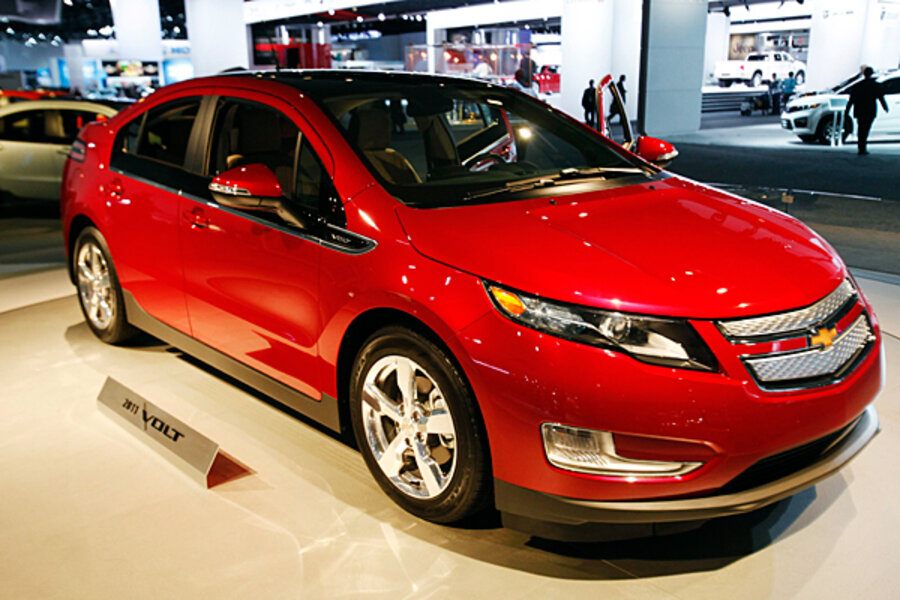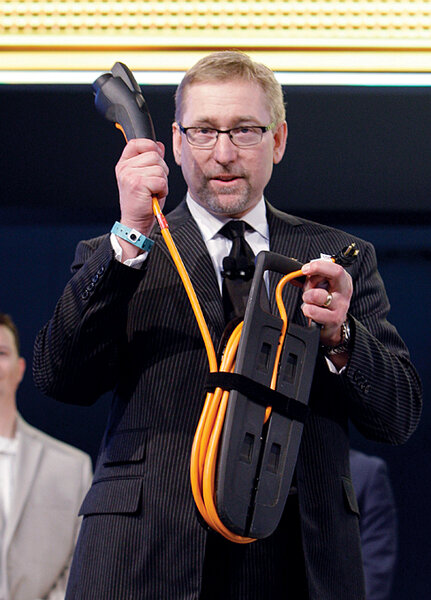Car charging network grows in Austin
Loading...
| Austin, Texas
As Chevrolet and Nissan roll out the first substantial wave of electric vehicles, a handful of municipalities around the United States are offering a first glimpse of how the need for power outlets – instead of gas pumps – might reshape cities in the years ahead.
In Houston, charging points are planned at select spots around the city, as well as in the parking lots of retailers such as Best Buy – all in a bid to ease "range anxiety," the fear that an electric car will run out of juice on the roadside.
San Francisco is experimenting with charging stations that let drivers pay by credit card.
And planners in Austin, Texas, are working to make sure drivers don't black out a neighborhood by charging all their cars at peak hours.
For now, most of the efforts remain local, meaning drivers won't be able to venture far from these cities' nascent networks of charging points. But these early adopters are laying a groundwork that other municipalities may someday build upon.
In many ways, Austin is a forerunner of the electric-car movement. It was one of seven US cities to receive General Motors's first shipment of its Volt – an electric car that uses a small combustion engine as well as a plug for charging – earlier this month. And Nissan's fully electric Leafs will be arriving in a few weeks. More than 150 electric vehicles are expected on Austin's streets by summer.
Those numbers were enough to persuade Austin Energy, the city-owned electric utility, to launch a $28 million federally backed initiative to build an infrastructure to support electric cars. The plan touches on everything from devising optimum in-home-charging practices to setting up charge points citywide. For example, Austin Energy is joining with California-based Coulomb Technologies, a charging-equipment manufacturer, to install 100 to 200 public chargers by the end of 2011.
Dell and AMD, two of Austin's high-profile tech firms, have installed chargers on their campuses so employees can top off before heading home.
Deciding where to put chargers takes strategic thinking; a full charge can take three to four hours. Top-off points are slated for spaces where people leave their cars for extended periods, such as municipal parking lots or outside retail stores. Across the US, retailers such as Costco, Cracker Barrel, and Walgreens have signed up for chargers.
According to clean-technology firm Pike Research, however, 80 percent of charging in the US is expected to occur at home. To fight grid overload, Austin Energy is monitoring power consumption through a pilot program that offers free home chargers to early electric-vehicle (EV) adopters. The utility will use the data it culls to devise plans to incentivize off-peak charging.
"Eventually we'll be able to learn how to conduct a symphony of chargers," says Karl Rábago, Austin Energy's vice president of distributed energy services.
So how will electric-car drivers pay for their power, both at home and around town? In Houston, utility NRG offers a typical range of monthly subscriptions, from a $49 fee for home-charging equipment (not including electricity) to an $89 all-inclusive plan with unlimited electricity and access to roadside chargers.
Austin Energy wants to offer a program for public chargers that lets consumers prepay for power that translates to a number of miles.
Already, states and local utilities are talking about extending their charging networks so drivers can roam farther.
•Austin Energy and other utilities are considering a network of chargers along the Interstate 35 corridor from San Antonio to Dallas.
•NRG plans to expand its charging network around the state later this year.
•Washington State has announced plans to build charging stations along its 275-mile stretch of Interstate 5.
But "right now travel is pretty much limited to your region," says John Gartner of Pike Research.
Moreover, developing a consistent experience from city to city could take some time. "It's like when the mobile phone industry adopted roaming charges," he says. "That took a long time to evolve."






